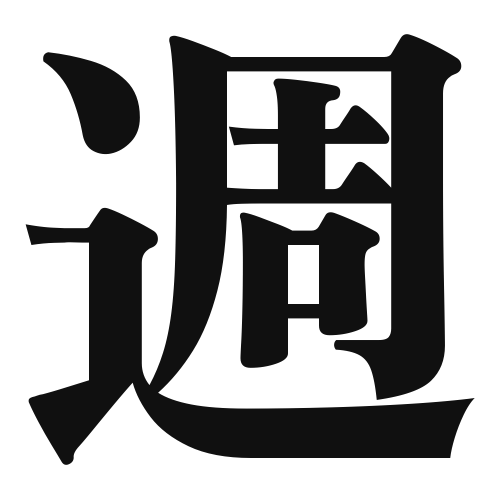1. Overview of Meaning
The kanji “週” (shuu) means “week.” It represents a period of seven days, commonly used in calendars and schedules to denote time intervals.
2. Formation and Radical
Formation of the Kanji: The kanji “週” is a compound character, which means it is formed by combining different elements. It is classified as a phonetic-ideographic character (形声文字), where the left part suggests the meaning related to time, and the right part provides the phonetic reading.
Radical: The radical of “週” is “週” itself, which is often associated with time and cycles.
3. Examples of Usage
Common Words and Phrases: Some frequently used words that include “週” are:
- 週末 (shuumatsu) – weekend
- 週間 (shuukan) – week (duration)
- 週刊誌 (shuukanshi) – weekly magazine
Example Sentences in Daily Conversation:
- 今週は忙しいです。 (Konshuu wa isogashii desu.) – This week is busy.
- 週末に友達と会います。 (Shuumatsu ni tomodachi to aimasu.) – I will meet my friends on the weekend.
4. Synonyms and Antonyms
Similar Kanji: A similar kanji is “月” (tsuki), which means “month.” While both refer to time periods, “月” indicates a longer duration of about 30 days, whereas “週” specifically refers to a 7-day cycle.
Antonyms: An antonym for “週” could be “日” (hi), which means “day.” While “週” encompasses multiple days, “日” refers to a single day.
5. Cultural and Historical Background
Relation to Japanese Culture: The concept of a week is integral to Japanese culture, influencing work schedules, school calendars, and social activities. The traditional Japanese calendar also reflects the importance of time management.
Proverbs and Idioms: One common saying is “週に一度の楽しみ” (shuu ni ichido no tanoshimi), which means “a joy once a week,” highlighting the significance of weekly routines and leisure activities in Japanese life.
